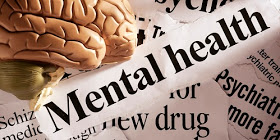The Crisis in Mental Health Services
The dramatic increase in the prevalence of autism spectrum conditions among children over the past decade indicates that a correspondingly large number of youth will be transitioning to adulthood in the coming years. It is estimated that more than 50,000 adolescents with autism will turn 18 years old this year in the U.S. As these numbers continue to rise, there is an urgent need to address the mental health issues faced by many adults on the autism spectrum.
Although we know that children with autism grow up to be adults with autism, there are fewer mental health services available for adults on the spectrum, particularly for individuals who are not intellectually challenged. A review in the open access journal, Autism Research and Treatment, highlights the service needs and the corresponding gaps in care for this population. The authors posit that the mental health system is in crisis and that although the rates of mental health issues for adults on the spectrum is high, accessing services to address these symptoms remains difficult. Poor recognition tends to occur for a number of different reasons, including restrictive intake criteria, misdiagnosis, limited knowledge or awareness of autism spectrum conditions, clinicians who lack confidence or experience in caring for this group of adults, and the belief that other service providers will provide this care. Consequently, many adolescents and adults on the autism spectrum, because of their diagnosis, are excluded from community mental health services, leaving them grossly underserved.
Mental Health Issues
Comorbid (co-occurring) psychiatric disorders are well documented in individuals with autism across the lifespan. Research suggests that a very high proportion of adults and teens on the spectrum present with co-occurring (comorbid) psychiatric conditions, particularly depression and anxiety. For example, recent studies examining psychiatric comorbidity in young adults with autism spectrum conditions found that 70% had experienced at least one episode of major depression, 50% had suffered from recurrent depressive episodes, and 50% met criteria for an anxiety disorder. Unfortunately, it appears that co-occurring psychiatric disorders and even the diagnosis of an autism spectrum condition itself often go unrecognized among more capable adolescents and adults on the spectrum seeking psychological or psychiatric care. Many youth and young adults report significant difficulties accessing healthcare services, particularly comprehensive health services. Part of the reason for this difficulty may stem from service providers feeling ill equipped to work with individuals with autism, particularly individuals with co-occurring mental health issues. As a result, adolescents and adults with autism spectrum conditions have access to significantly fewer programs than adolescents and adults with other types of developmental disabilities. Not surprisingly then, a consistent theme for parents of individuals with autism is the fear that their child will fall through the cracks when transitioning from child to adult services. Similar concerns have been voiced by the individuals on the spectrum themselves, who describe how their needs are infrequently recognized and the programs and services available are not designed for people with autism spectrum conditions in mind.
Conclusions
Adolescents and adults on the autism spectrum represent a complex and underserved population. Of the studies completed to date, findings suggest that this group of adolescents and adults faces a multitude of psychiatric and psychosocial issues, alongside significant challenges in accessing services. Social skills deficits for individuals on the spectrum persist into adulthood, and adults appear to be at an increased risk for developing depression and anxiety. Despite this, very few studies have examined treatment approaches and interventions (pharmacological and psychosocial) for adolescents and adults with autism spectrum conditions. While evidence is beginning to emerge for interventions targeting this population, including cognitive-behavioral therapy (CBT), mindfulness-based therapy (MBT), and social skills training (SST), further large-scale studies which compare the effectiveness of, for example, CBT or MBT versus other treatment options (e.g., medication, counseling, etc.) are required. Likewise, there is an immediate need for mental health clinicians who are trained to apply these techniques. In developing interventions, programs must also consider what adolescents and adults want. For example, adolescents and adults on the spectrum may be more interested in interventions which focus on vocational opportunities than interventions targeting social skills. Moreover, both individuals and their family must be viewed as valuable contributors and fully involved in this process. Lastly, researchers must look at issues of service cost and efficiency when evaluating the impact of interventions.
Recommendations
- According to the U.S. Surgeon General, over the course of a year, approximately 20% of children and adolescents in the U.S. experience signs and symptoms of a mental health problem. Unfortunately, most children and youth who are in need of mental health services do not actually receive them. Psychological services should be expanded in schools to include a major focus on the delivery of mental health services to all students.
- Developmental disability agencies or agencies supporting individuals with autism spectrum conditions must partner with community mental health agencies to help train, mentor, and build capacity to care for this group across the lifespan. It is important to note that many clinicians working within community mental health agencies already have the skills to effectively deliver this care, but programs either preclude their ability to do so or they lack the confidence to work with this population.
- There is a critical need for community mental health agencies to review their exclusion criteria to include persons with autism spectrum conditions. For example, agencies providing care for persons with mood or anxiety disorders should not exclude individuals on the basis of a diagnosis of autism. Community mental health agencies have the resources and expertise in mental health, along with the programs to deliver services for individuals with mental health issues (e.g., vocational programs, counseling, and therapies), but will need guidance from developmental disability agencies to successfully adapt these programs for adults on the autism spectrum.
- Developmental disability agencies must reevaluate their inclusion criteria to include persons with autism spectrum conditions, regardless of IQ, and across the lifespan. Organizations must work together, combining expertise in autism from developmental disability agencies with knowledge and resources from community mental health agencies.
- There is a need to study and identify programs and supports that are most effective in both school and community settings. This will require a full continuum of mental health services including counseling, vocational training, supported employment, inpatient services, and outpatient services. It will also require a network of experienced clinicians and community partners. Many of these efforts are already underway in pediatric settings; however, these same efforts are required in adolescent and adult mental health services.
- Finally, there is a need to prepare and equip older youth with autism spectrum conditions for the transition to adult services.
Johanna K. Lake, J. K., Perry, A., & Lunsky, Y. (2014). Mental Health Services for Individuals with High Functioning Autism Spectrum Disorder. Autism Research and Treatment, Volume 2014, Article ID 502420. http://dx.doi.org/10.1155/2014/502420
Lee A. Wilkinson, PhD, NCSP is a licensed and nationally certified school psychologist, registered psychologist, and certified cognitive-behavioral therapist. He is author of the award-winning books, A Best Practice Guide to Assessment and Intervention for Autism and Asperger Syndrome in Schools and Overcoming Anxiety and Depression on the Autism Spectrum: A Self-Help Guide Using CBT. He is also editor of a best-selling text in the APA School Psychology Book Series, Autism Spectrum Disorder in Children and Adolescents: Evidence-Based Assessment and Intervention in Schools. His latest book is A Best Practice Guide to Assessment and Intervention for Autism Spectrum Disorder in Schools (2nd Edition).
Source: www.bestpracticeautism.blogspot.com/2015/02/the-mental-health-crisis-in-mental.html?m=1


